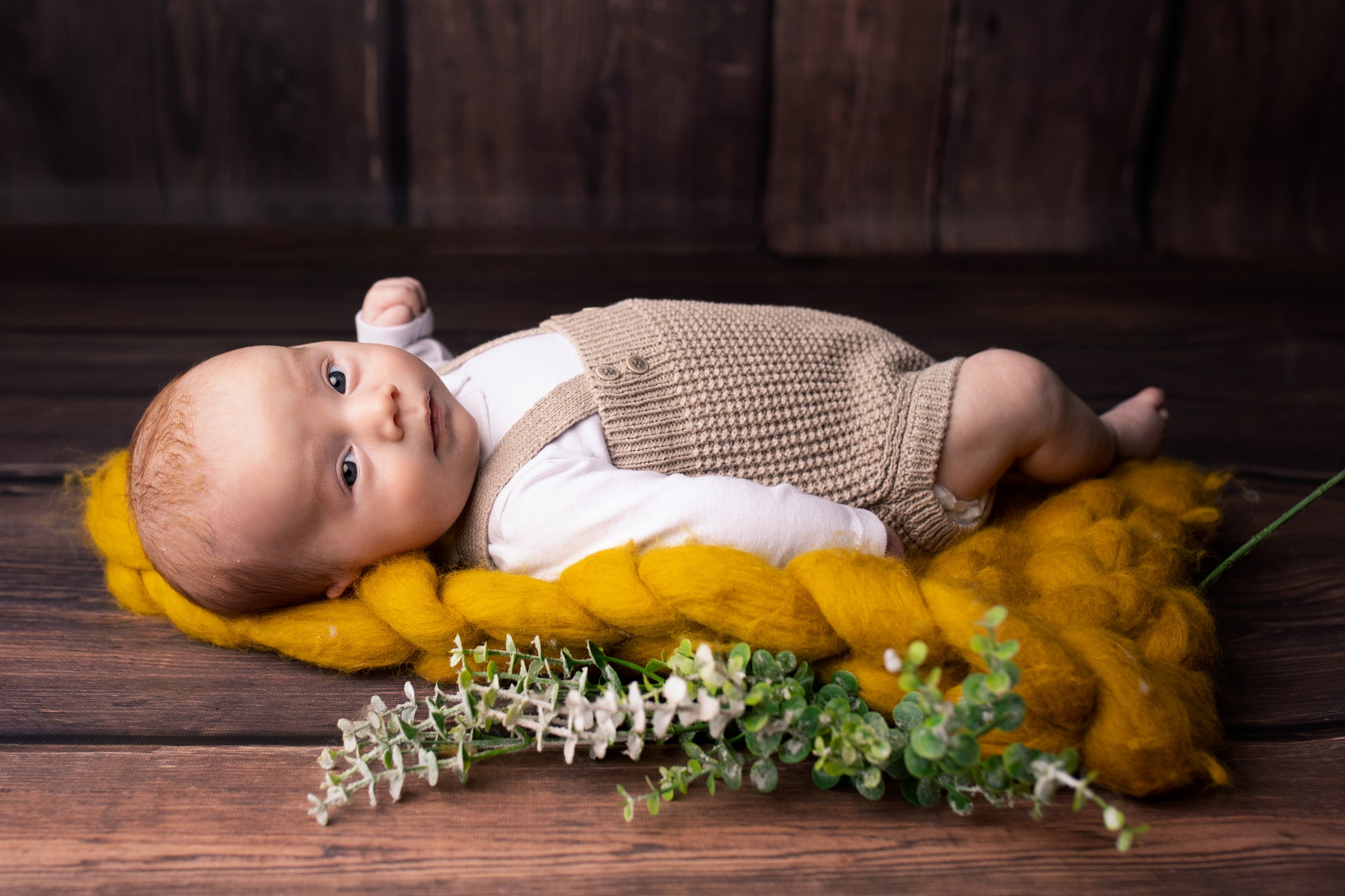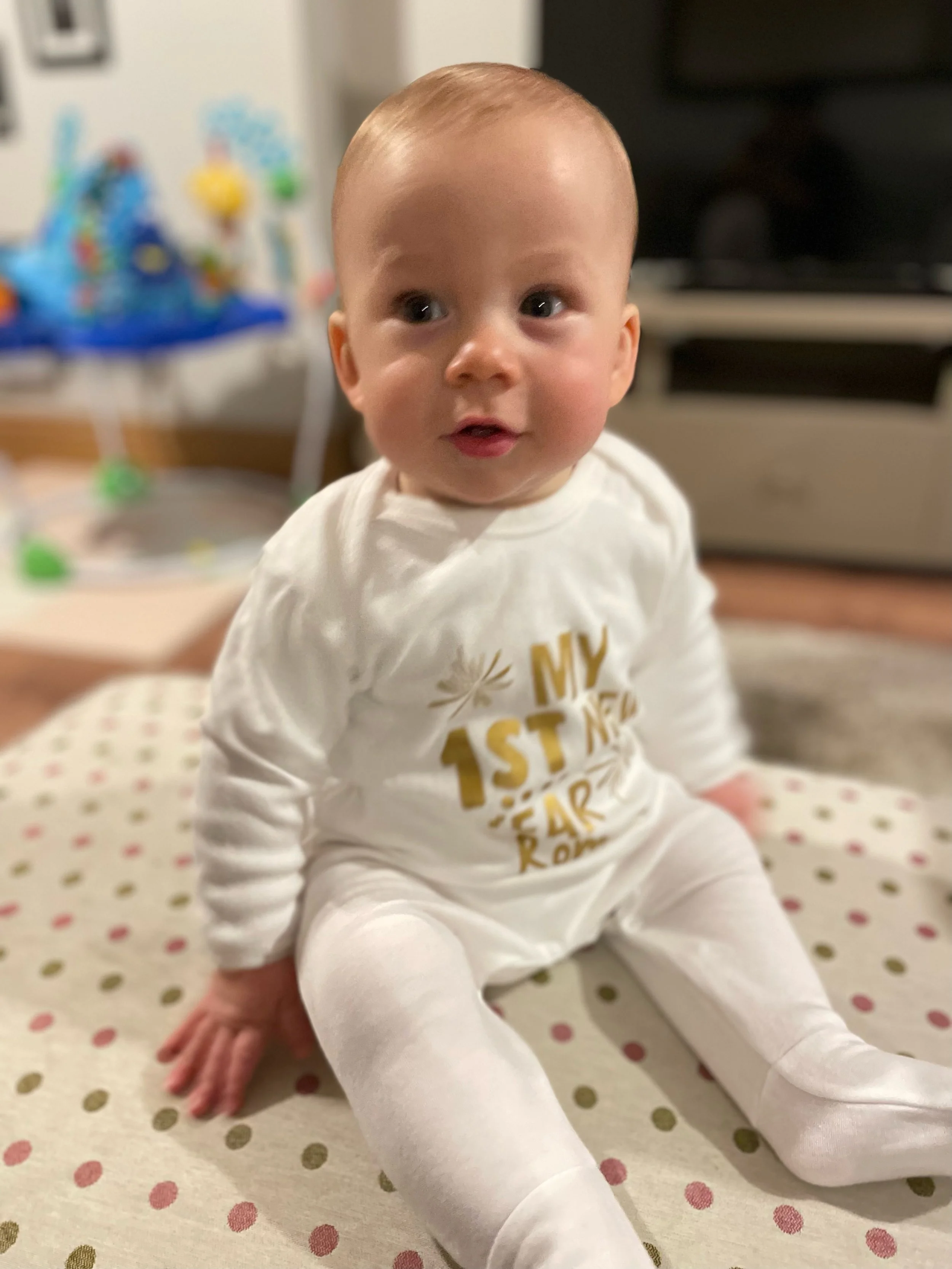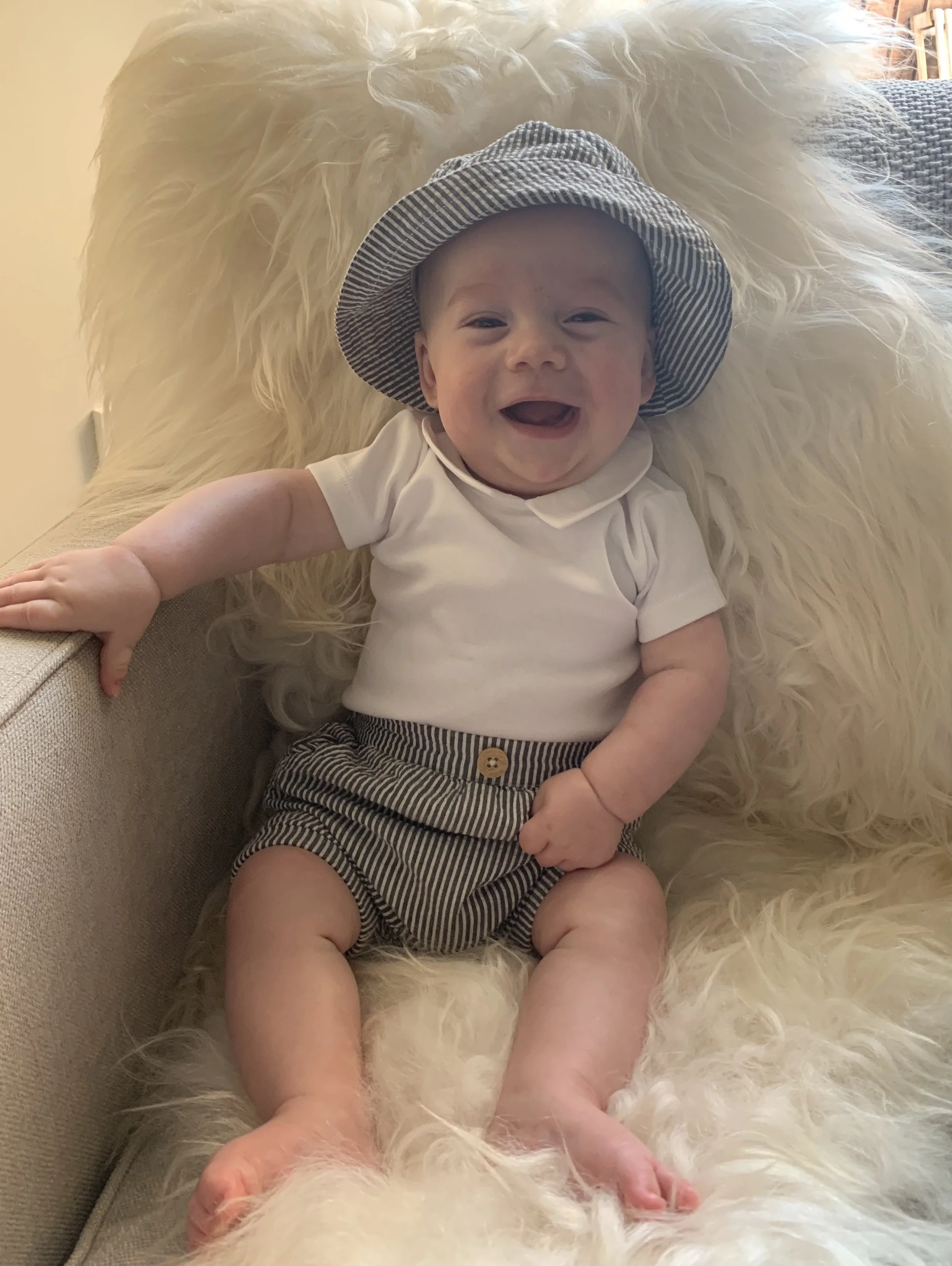Roman’s Story - Congenital Diaphragmatic Hernia (CDH)
Roman’s CDH story began at our 20-week ultrasound scan. I was nervous leading up to the scan, as I had been from the start of the pregnancy, for no reason other than being a first-time mum and a natural worrier. COVID restrictions meant attending appointments alone which only added to the pre-scan nerves. Two days before the appointment, I had a dream that the baby had a hole in his tummy. I told myself to stop being silly; it was only a dream after all.
During the scan at our local hospital (Good Hope, Midlands, UK), the sonographer seemed to be taking a very long time measuring the heart's position before the dreaded words came. “There seems to be a problem. I need a second opinion. The baby’s heart is in the wrong place.” I felt like my stomach had dropped onto the floor — my fears were coming true. Another lady came into the room and repeated the measurements. She agreed, our baby’s heart was pushed too far to the right. They told me that they could not diagnose the problem and we needed to be referred to the fetal medicine department at Heartlands Hospital. They gave me a list of four possible reasons (one being Congenital Diaphragmatic Hernia, commonly known as CDH) for this abnormality and a referral for a level two ultrasound.
The next appointment was scheduled for five days later. I spent those five days crying and obsessively researching each condition on the list. Each varied in severity. I knew in my heart that it was CDH. I had heard of it before because I had recently watched an episode of One Born Every Minute which featured a baby born with CDH. He did not survive and I distinctly remember sobbing my eyes out and vowing never to watch OBEM again while I was pregnant.
The scan at fetal medicine confirmed it, left-sided CDH. Intestines and possibly liver up, pushing baby’s heart to the right side, crowding his lung space. We were given an LHR of 1 and told there could also be a heart defect. We were offered a termination of pregnancy but promptly declined. The consultant recommended an amniocentesis to rule out links to the trisomies and other genetic causes. She was concerned that our baby had clenched fists throughout the scan, which can be a marker for Down Syndrome and Edward’s Syndrome. I opted to have the amniocentesis because I needed to know as many facts as possible about what we were facing. My husband and I both had blood taken for genetic testing also. The following three days waiting for the first round of results were grueling. I was waking multiple times in the night, crying and Googling in a vicious cycle. I would scour the internet looking for CDH stories, the good and the bad. I Googled every possible genetic condition ever associated with CDH and was convinced by each in turn that that was what my baby had. After what felt like forever, finally, the initial test results were in and they were negative! Now, 10 more days to wait for the extended genetic results. The relief was palpable but short-lived. I realize now that this was the case for the remainder of the pregnancy. Each appointment, scan and test was a hurdle to get over, followed by a short spell of relief that preceded the build-up of anxiety to the next.
The extended results also came back negative. As far as the technology available to us could tell, there were no underlying genetic conditions. The next step was a referral to Birmingham’s fetal medicine unit to have another assessment of the CDH and an echo of our baby's heart.
The conclusion of this appointment was the same diagnosis. Our baby’s diaphragm and lungs were impacted by CDH and we got an all-clear from the echo of the baby’s heart. Good strong heart! This was the best possible news. The criteria for receiving treatment in the UK for CDH is an otherwise clean bill of health, no heart defects and no genetic concerns.
We were given a 50% chance of survival and again offered a termination. I once again declined and asked the consultant not to mention termination again. We had decided that if the baby had no other serious complications, then he deserved a chance at life and we would fight with him. From here, there was a scan scheduled every fortnight to check on the status of his growth and lung volume. A fetal MRI was performed at the Birmingham Children’s Hospital. The results of this were disheartening. From the ultrasounds, we had been given a steady LHR of 1 and potentially liver up. The MRI showed a large portion of the liver up and a much lower lung volume than before. This put him in the lowest survival category and brought a fresh wave of worry. It took a while to be positive again.
By 26 weeks, I had started to develop polyhydramnios, so ultrasounds were upped to once a week to monitor this. By 30 weeks, my fluid had risen much too high and I was at risk of premature labor. I was given medication to reduce the fluid for a course of four weeks. I was desperately trying to get to 37 weeks to give our boy the best possible chance. The medication worked and I was scheduled for induction at 37+1. The labor induction did not go as smoothly as I had hoped and he ended up having to be delivered via emergency c-section under general anesthesia. Our baby boy was in distress and his heartbeat could not be consistently traced. This was a terrifying experience, especially being alone due to COVID and going under anesthesia not knowing if he would be alive when I woke up.
Roman was born on the 9th of February 2021 at 37+2, weighing 7 pounds. He was intubated at birth and was stable by the time I woke up. I was able to see him in the NICU for ten minutes when he was four hours old. As soon as I saw him, the trauma I was feeling from the birth process just faded away. I was in love!
We had been advised that Roman would spend 5-7 days on the neonatal unit to stabilize and get strong enough to transfer for surgery. He was doing so well they decided to transfer him to the children’s hospital PICU late that same evening at just 15 hours old. I was devastated at being separated from him but thrilled at the same time because his progress so far was so positive.
I was discharged the following morning from BWH and went straight to Roman’s cot side at BCH. He was on very low oxygen and coping well, so it was decided he was ready for surgery! It was scheduled for the next day, at two days old. Watching him being wheeled away to the operating room was the hardest thing I have ever done. He was in the good hands of his surgeon, Dr. Ingo Jester, and the surgery took four and a half hours. Roman had intestines up, but his liver was down at the time of surgery. Dr. Jester said the liver had been up but had come back down and so, because of this, Roman’s diaphragm defect was large enough to require a Gortex patch. We had been warned that after surgery it was likely that Roman’s condition would worsen before improving. It did. He developed pulmonary hypertension and needed his oxygen support increased and nitric support. He began a medication called Sildenafil and was having daily echocardiograms to monitor the pressures. The next five days spent reducing the nitric support were a rollercoaster. He would be weaned down on the nitric, oxygen and ventilator rate and do very well for a while and then begin tiring and need more support again.
On the fifth day following surgery, he managed to come off nitric completely, and by seven days post-op, the doctors decided he could be transferred back to the NICU at BWH to complete his recovery. We were not allowed to accompany him in the ambulance but followed shortly behind. We were gobsmacked when we arrived at the NICU; Roman had been extubated upon arrival at BWH and just had nasal prongs for the lowest amount of oxygen. It was so lovely to finally see his face without the ventilator and covered in tape. The next day (9 days post-op), the oxygen was removed and he was consistently saturating within normal levels!
From here on, Roman just got stronger and stronger. He spent the next 16 days learning how to feed, gradually weaning down on the tube feeds. When he was at 50% oral feeds and after a final X-ray and echo, we were allowed to bring him home! So after 25 days, Roman left the hospital with no other medical support other than his NG tube.
Once home, Roman flourished and his feeding tube was soon removed. We had a brief visit back to the children’s hospital with a mild case of bronchiolitis. Luckily, Roman did not require any oxygen support during this visit, which amazed us all. Even with bronchiolitis, his oxygen saturation remained perfect. As Roman approaches his first birthday, we could not be any more proud of him. He is the happiest, most determined, and cheeky little boy. He is hitting his milestones and we are so grateful for him every day.




